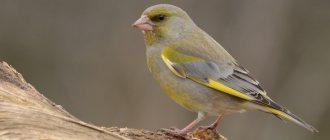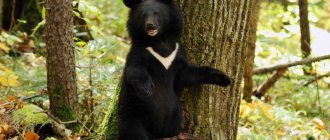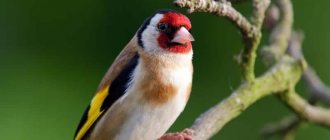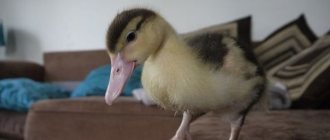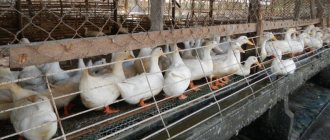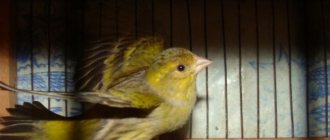Canaries are small songbirds. At home, canaries can live from 8 to 15 years. The lifespan of a canary primarily depends on proper, balanced nutrition. Particular attention should be paid to feeding during periods of molting and nesting. During these periods, the bird’s body is greatly weakened, and mineral and vitamin supplements are required. Let's figure out what you can feed a canary and what the canary eats.
Hard food
Food for canaries must contain different types of grain. The most important criterion for its selection is freshness, high quality, absence of musty smell, mold and rot.
We assemble it ourselves
The list that is compiled for feeding canaries should contain the following types of grains:
- Corn contains carotenoids that are important for bird vision and plumage. Its share is at least 20% of the total amount of feed.
- Oats should be included in the diet of birds feeding babies. It contains the necessary set of essential amino acids, proteins, and starch. The proportion of oats in the mixture should be about 10%.
- A mandatory component of the feed should be millet of different varieties, in an amount of 5-7%. Without this component, the canary will not feel well.
- Buckwheat seed enriches the diet with beneficial vitamins and minerals. It is better absorbed in the form of undercooked milk porridge from ground seeds. Add to the menu 2-3 times a week.
- The main supplier of vitamins E and group B is sprouted wheat. The canary is offered this food twice a week.
- Rice is also added to the diet, but rarely and in small quantities. It is needed for disorders of the gastrointestinal tract as a fixative.
- Barley and rapeseed are given to birds in autumn and winter to increase the body's resistance.
- Canary seed contains tryptophan and helps birds cope with stress. Its amount in feed can reach up to 15%.
When forming a canary’s diet, it must be taken into account that sprouted grains can be stored for no more than three days, even in the refrigerator.
Purchased mixtures
Ready-made food mixtures for canaries are already balanced in the composition of the necessary microelements and do not need improvement. If you decide to switch to ready-made food, no additional vitamins are required. The most popular food brands are:
- Triol
- Vitapol
- Padovan
- Fiory
- Rio
- Faithful friends
- Waka luxury.
When purchasing a mixture, you need to pay attention to the expiration date. The packaging must be hermetically sealed. Manufacturers make notes on the pack, which can be used to determine for what period of life the composition was selected. The instructions for the food contain the daily allowance for the bird. If your pet has an intolerance to some components, you need to carefully study the composition.
On a note! Balanced foods are also produced that help birds easily endure molting, are suitable for singing canaries, and improve the brightness of their plumage.
Types of canaries with photos and names
There are several varieties of song and ornamental canaries that are suitable for keeping in captivity. The most common decorative types include:
Belgian Fancy Canary
The peculiarity of the bird is that it has a characteristic vertical type of posture and a strongly lowered head.
Yorkshire Canary
Yorkshire canary, which is characterized by a slightly larger size, as well as a body shape similar to a carrot.
Border Fancy Canary
This is a small bird, with brilliant plumage, and also undemanding in maintenance.
Fife Fancy Canary
In appearance, this canary is similar to the Border canary, but at the same time has a slightly smaller body size.
Crested Canary
Which differs in that it has several longer and raised feathers on its head, giving the impression of having a crest.
Norwich Canary
This is a bird characterized as large and massive, with a dense build and original appearance.
Staffordshire Canary
It has a very bright and attractive plumage, which is dominated by bright red or contrasting pink shades.
Lizard Canary
The color of this bird has an original speckled coloring, reminiscent of the scales of a lizard.
Parisian Frilled Canary
It is considered the largest variety and the most popular. It is distinguished by the presence of curly plumage, as well as legs twisted in the form of a corkscrew.
Mehringer Frill Canary
It is completely similar in appearance to the Parisian Curly Canary, but at the same time has a much smaller size.
The purpose of breeding the domestic song canary was to improve the natural singing characteristics of male canaries. Canaries have the ability to reproduce many sounds and even primitive melodies, regardless of the variety. Depending on the species, canaries are capable of making the following sounds:
German Roller Canary
This is a singing canary that produces low-pitched voices and is therefore characterized by a quiet sound. She can also make sounds without opening her mouth at all. At the same time, when playing sounds, intermittent, sharp sounds may appear, which are not very pleasant, which is a disadvantage of this variety.
Belgian Malinois (Waterslager Canary)
The Belgian song canary has an attractive appearance and a pleasant voice. Its singing consists of sounds reminiscent of gurgling, gurgling and bubbling together with nightingale trills.
Spanish Timbrado Canary
The Spanish song canary easily performs three song tours in a strictly defined sequence, as well as with a metallic tint.
American Singer Canary
Represents the American song canary. This variety was released after crossing the German Roller and the Border canary. The bird has a beautiful appearance and a pleasant, melodic and loud sound.
Interesting to know! The singing Russian canary is also very popular. The basis of her singing is the trills of the tit, the common bunting, and the dubrovnik.
How long do canaries live?
The lifespan of a songbird directly depends on the conditions in which it is kept, and it is very important to maintain the correct temperature, lighting and humidity. In such conditions, a canary can live up to 12 years. It should be noted that there are individuals that have lived for 15 years.
Canaries. Daily care and maintenance
Seeds and nuts
When independently compiling a canary’s diet, you need to pay attention to the seeds of wild and cultivated grasses. The most affordable is rapeseed, which is sometimes replaced with spring rapeseed. Experienced canary breeders recommend adding rapeseed to the food for colored canaries in an amount of up to 45%, for ornamental breeds - at least 25%, and hybrid representatives - 40%.
Rapeseed seeds.
The following is also added to the bird diet in small quantities:
- Unripe seeds and greens of wild herbs. The list includes chicory, plantain, dandelion, quinoa, woodlice, sow thistle, nettle, shepherd's purse, fescue, timothy.
- The addition of vegetable seeds is allowed. Canaries happily eat the seeds of rutabaga, cabbage, turnips, cucumbers, pumpkins and zucchini.
- An excellent addition to canary food are agricultural seeds. These include poppy, hemp, chickpeas, legumes, flax, canary grass, and sesame.
The feathered menu is enriched with raw sunflower seeds, almonds, and peanuts. Walnuts and oilseeds contain many healthy fats. But they should be offered to your pet as a dosed treat - no more than 3 sunflower seeds or 1⁄2 chopped nuts twice a week.
Where to buy a pet canary?
All bird lovers, their breeders, as well as breeders are united in the World Ornithological Confederation. The activities of such an organization are aimed at preserving the species diversity of birds, not only those that represent natural populations, but also those that are bred artificially by specialists.
Therefore, it is better to purchase healthy pets from special institutions that practice breeding these birds. Purchasing birds at the market carries a high risk of having an unhealthy pet.
On average, a male canary costs about 5 thousand rubles, and a female can be bought for 1 thousand rubles.
Fruits and vegetables
Fruits, vegetables and berries are low-calorie foods, are easily digestible and help the coordinated functioning of internal organs.
You can feed canaries at home with sweet varieties of apples, pitted cherries, bananas, peaches, apricots and grapes. They are cut and secured between the rods. Birds love so-called “fruit garlands”, when pieces of fruits and vegetables are strung on apple tree branches. If fruit is placed in a feeder, it should be separate from grains and cleaned daily of food residues.
On a note! In winter, birds benefit from fruit and vegetable juices. You can make them yourself or buy a ready-made product that does not contain sugar or preservatives. You can also use fruit and vegetable purees from the baby or diet food series.
In addition to fresh fruits, birds can be fed raisins, dried apples, prunes, after soaking them in water. Canaries should not be given dried fruits coated in sugar or treated with chemicals. Among vegetables, canaries love carrots, cabbage leaves and beets. Give them in small portions, separately, and monitor the condition of the bird.
When the chicks hatched
- Preparing birds for mating . Increase your diet of foods rich in vitamin E, fiber, and proteins. Animal feed is given 3-4 times a week, a quarter teaspoon per bird. Vegetables and fruits are offered daily: bell peppers, carrots, pumpkin, pears.
- Laying and hatching . Increase the proportion of greens, stop giving egg food. It is important to have plenty of water so that future parents have the opportunity to care for the eggshells.
- 2-3 days before hatching, the chicks are reintroduced to egg food, complete grains and fresh food.
- Feeding chicks . When the chicks hatch, the availability of soft food is important. The grains are steamed, and porridges from barley, oats, and wheat are cooked in water with the addition of grated vegetables. Unprocessed rice or wheat is sprouted.
Additional food
The diet of indoor poultry should be supplemented with feed rich in animal proteins and other beneficial microelements. They are given in doses, in separate feeders, which are kept perfectly clean.
Boiled eggs become a source of protein for birds, to which you can add fish oil in the amount of 1-2 drops per spoon of the mixture. This is done in winter, when the amount of sunlight is limited, as well as during preparation for nesting, while feeding the chicks. Canaries eat well low-fat cottage cheese, which is completely absorbed by the body. Honey belongs to the category of easily digestible products with a high content of beneficial enzymes. It can be added in small quantities to porridge.
On a note! In nature, canaries feed not only on plants, but also on insects. But such a product is usually not available for sale, and by raising insects at home, you can easily infect your bird.
Canaries should always have roughage in their cage in the form of fresh twigs of apple, cherry, currant, hawthorn, rowan, birch, and raspberry. This list should not include branches of coniferous trees that emit toxic resins, as well as branches of oak and pear trees with a high content of tannins.
What to feed canaries
You need to feed the canary with grain, seeds, oilseed feed (nuts), fortified premixes, and succulent food.
Cereals and seeds
Grain is the basis of canary nutrition; birds should be offered different types of grain crops.
Experts suggest giving different types of feed.
| Types of canaries | ||||
| Type of grain (% of total diet) | Colored | Decorative | Hybrid subspecies | Peculiarities |
| Rape | 45 | 25 | 40 | Canary “bread” contains many trace elements and oils that are beneficial for birds. |
| Flax-seed | 2 | 5 | 5 | In addition to its rich composition, flaxseed has medicinal properties (enveloping, mild laxative). It is also used to treat hoarseness in birds. |
| Millet | 5 | 5 | 5 | It must be present in the daily menu, and if not present, the birds may die. |
| Canary seed | 15 | 20 | 15 | The best food option. |
| Hemp | 5 | 10 | 5 | The best food option. |
| Sunflower seeds | 2 | 7 | 5 | Since seeds contain up to 50% fat, their share should not exceed 7%. Birds readily eat them together with grated carrots or crushed breadcrumbs. |
| Oats | 15 | 10 | 10 | Since it contains a lot of fiber, it is recommended to give it steamed (especially to young chicks) or sprouted. Useful during incubation. Do not indulge in this type of food - it can cause constipation. |
| Poppy | 2 | 5 | 10 | It is not a required ingredient, but can be added to food if available. It has a fastening, mild antispasmodic effect. |
| Chickpeas | 9 | 10 | 5 | Often used as a base for grain mixtures. It has a rich composition that meets the needs of feathered pets. Give crushed or sprouted. |
| Wheat | 10 | 15 | 10 | They give sprouted, steamed or unripe grain. Recommended for young animals during molting, as well as for females who are hatching offspring. |
| Barley | 10 | 10 | 5 | They are given steamed with sweet water (1 tablespoon of sugar per 1 kg of barley grain), since birds do not really like its natural taste. Also useful as microgreens. |
| Buckwheat | 1 | 1 | 1 | Cereals are given in the form of porridge. The grain is given soaked or sprouted. |
| Rice | 1 | 1 | 1 | They are rarely given - boiled or as microgreens. The decoction is brewed for diarrhea. |
| Corn | 15 | 20 | 15 | Corn grits or flour, porridge made from it, and microgreens are used. |
| Cereal bran | 5 | 5 | 5 | Mix with wet mash or steam before feeding. |
| Lettuce and weed seeds (plantain, dandelion, quinoa, etc.) | no restrictions on portions | no restrictions on portions | no restrictions on portions | They are given in both mature and unripe forms. |
| Leguminous plants | 2 | 2 | 2 | Legumes are very rich in protein (superior to cereals). In addition, they contain large amounts of calcium and phosphorus. The most useful legumes are those in green pods, which are rich in vitamins and microelements. However, green peas and beans should be given to birds in limited quantities so as not to cause upset. |
Nuts
The canary also feeds on nuts. They are a favorite treat for birds. Since this food contains fat, you should not feed it a lot.
As for acorns and chestnuts, these foods are very rich in carbohydrates and minerals, but, as a rule, canaries eat them without much enthusiasm. Therefore, it is better to chop such food before consumption and add it to the main diet.
Fruits and vegetables
Succulent food must be present in the diet of song finches. It includes fruits, vegetables and a variety of greens. Such food is quickly and easily absorbed by the body, improves the functioning of the digestive tract and replenishes the need for vitamins. It is allowed to give fruit and vegetable juices and purees from the following fruits. There are no restrictions on the dosage of this type of feed.
| Fruits, berries | Vegetables | Green plants |
| • apples • pears • peaches • apricots • bananas • dates • dried fruits (prunes, dried apricots) • rowan • cherries (pitted) • rose hips • tangerines • melon • kiwi | • beets • carrots • cabbage • tomatoes | • cross • dandelion • wormwood • primrose • chicory • nettle • chickweed • sorrel • lettuce |
Vitamins and mineral supplements
Vitamins for canaries are the basis for the proper functioning of the body, as well as for normal metabolism. Their deficiency can cause severe pathological disorders (vitaminosis, hypovitaminosis) and lead to deterioration in the health of singing pets. Problems can only be avoided if you constantly monitor the intake of nutrients from food.
It should be noted that when using artificial vitamins, one must be careful, since a slight overdose can lead to illness in the canary or even its death. It is best to use natural food that contains useful substances.
Minerals regulate cell nutrition and metabolism, and are also involved in the formation of bones and eggshells. Mineral deficiency disrupts the normal development and growth of birds, and leads to serious pathological disorders. Therefore, these substances must be added to feed and as an additional mineral supplement.
The main natural mineral supplements are:
- charcoal;
- sepia;
- chalk;
- egg shells;
- sand;
- clay;
- glucose;
- calcium lactate or gluconate.
All of the above products are given crushed to a powdery state or vitamin-mineral tiles are prepared from them.
At the end of the cold weather, birds are given tree branches:
- Apple tree,
- cherry,
- currant,
- raspberries,
- viburnum,
- birch,
- Linden,
- maple,
- willow,
- aspen,
- ash,
- alder,
- hawthorn,
- Rowan,
- elder,
- beech.
In winter, a variety of food for canaries includes dried hay or branches soaked in water.
Successful breeding of birds involves the use of animal products:
- boiled chicken eggs;
- fish oil (1–2 drops per 1 teaspoon of mixture);
- trivitamin (1–2 drops per 1 tbsp of mixture);
- low-fat cottage cheese;
- honey;
- small insects.
Mineral supplements
For good development of birds, mineral supplements are necessary. To replenish mineral reserves, the canary eats clay, sepia, chalk, eggshells, river sand, and charcoal. Canaries can be given crushed calcium gluconate tablets. The listed ingredients are added to a portion of food or mineral tiles, which are sold in pet stores, are placed in the cage. The second option is preferable. The bird itself will regulate the intake of missing minerals.
Sepia.
Nutrition of adult canaries
The main share in the diet of adult canaries belongs to grain mixtures. It is simple and convenient to buy ready-made food in pet stores. Preference should be given to proven brands such as Fiory, Triol, Rio, Vitakraft or Vaka Lux. Please check the following before purchasing:
- packaging must be sealed;
- the expiration date should not expire in the near future;
- the food must be labeled “for canaries.”
Drink
Water should be in the bird's cage at all times. This is the main point when caring for a canary. If there is no or insufficient water, all other efforts to feed your pet will be in vain. For a canary to feel good, it must have clean water not only for drinking, but also for bathing.
The drinking bowl should have filtered, settled or boiled water at room temperature (+22℃) around the clock. Tap water contains high levels of salts. Pet stores sell bottled water intended for pet birds. Mineral water, sweet water with dyes should absolutely not be given to the bird. Occasionally water is replaced with juices. After this, the drinking bowl is thoroughly washed.
How to care?
Caring for canaries is not a hassle and consists of:
- Choosing the right cell. It is better if it is simple, without unnecessary details: domes, turrets, decorative elements. It is important that the distance between the rods does not exceed a distance of 1.2-1.4 cm, otherwise the birds, poking their heads through, may get stuck between them.
- Selecting the optimal cell size. The size of the cage depends on the number and breed of birds. For a single canary singer, a house measuring 45/30/25 cm is sufficient. If you are keeping several birds intended for breeding, you will have to acquire three cages at once - for the canary during the non-breeding period, a cage for mating, and a home for females with chicks during the period of feeding them. The cage should have a set of necessary accessories: several perches located at different heights and having a diameter of 8-15 mm, three feeders (for vitamin-mineral supplements, basic seed-grain and soft food), drinkers with a spout, and a bathtub.
- Correct installation of the cage. Canaries are afraid of drafts, changes in temperature and humidity, and strong odors. The cage should be well lit for several hours a day. It is installed so that dogs, cats, and small children cannot drop it or harm the pet.
- Regular cage cleaning.
- Compliance with the rules of keeping during the period of preparation for mating , during the period of incubation and feeding of chicks.
Prohibited Products
Canaries are small, gentle birds. They are capricious about many products:
- Fruits such as mango, avocado, papaya and persimmon should not be given to birds in any dose. They contain substances hazardous to poultry.
- Parsley and many herbs contain essential oils that cause severe poisoning in the canary.
- Raw potatoes should not be given to birds. Boiled, it is offered in strictly limited quantities, as it contains a lot of starch, which is harmful to poultry.
- You should not give birds kernels of cherry, plum, or apricot kernels, which contain hydrocyanic acid.
- Branches of poplar, oak, pear and bird cherry, all conifers are prohibited.
Citrus fruits can be given to birds, but only if they are not allergic to them. You must first remove the peel, which is toxic. Food from a human table is dangerous for a bird. She should not be fed chocolate, smoked meats, spicy, pickled, or salty foods. This can lead to the death of the bird.
Fresh twigs for the canary
In winter, place twigs from fruit and deciduous trees in the canary's cage. Birds peck them with pleasure, receiving fiber and additional microelements, as well as vitamins and salts. Canaries often gnaw the twigs clean. It is best to use branches of apple, cherry, raspberry, currant, alder, rowan, elderberry, maple, linden, birch, viburnum, aspen, and beech.
We will continue the topic of feeding a canary in our next article, where we will discuss in detail animal feed, the necessary vitamins for a canary, and what not to feed your bird.
Feeding rules
The rules for feeding a canary include several mandatory conditions:
- The composition of the feed must be balanced. Beginning bird lovers are recommended to purchase ready-made food from well-known brands. They contain all the necessary vitamins, minerals and trace elements necessary for the canary to feel good.
- To diversify the feeding diet and improve the bird’s digestion, you need to include delicacies made from fresh or dried fruits and vegetables in the menu.
- Particular attention should be paid to the content of protein foods in the poultry diet. Cottage cheese and eggs are best digested.
- The canary is fed at the same time. Do this twice a day - morning and evening. During the day, you can offer the bird a treat and give it juice.
- Branches of fruit trees and shrubs should always be in the cage. This rule also applies to mineral supplements.
- The water must be clean and fresh. Change it daily, and be sure to wash the drinking bowl.
The rules are simple, but they must be followed so that the bird is cheerful and healthy throughout its life. If you liked the article or have something to add, then leave your comments and also join our VKontakte group.
What canaries shouldn't eat?
The diet of canaries includes both rules and some prohibitions. Improper feeding can cause illness, reduced life expectancy and quality of life, or premature death of birds.
The ban includes any delicacies “from the human table”, food for other species of birds (for parrots and other poultry), exotic fruits (pineapple, mango, papaya), parsley, protein food (with the exception of chicken eggs).
It is also prohibited to overfeed canaries: the daily intake of grain and any other food for one bird is 10-15 grams (a teaspoon). Moreover, some types of seeds may be too large or hard, in which case it is recommended to soak the seeds in cold water to soften them.
So, the importance of nutrition in the life of canaries cannot be overestimated. But the nutrition of pets, just like human nutrition, should be relatively correct. Everything is important, from the basic principles to details like treats and innovations.
An attentive owner should remember both the rules and prohibitions when feeding canaries. It is worth betting on a variety of bird “dishes”, because monotony or the absence of one or another nutritional element in the diet can either simply bore the bird or ruin its health.
Features of character and lifestyle
Photo: Female canary
By nature, canaries are endowed with a calm, peaceful character. It is worth noting that males are somewhat calmer and friendlier towards humans than females. Accordingly, males adapt faster and easier to the home environment and get used to people. Those who plan to acquire this small but very singing bird are recommended to get young individuals. Mature birds are characterized by quarrelsomeness. It is difficult for them to get used to people. In some cases, they tend to show aggression.
Birds that come to humans when they are no longer young lead a familiar lifestyle. They are not inclined to change their habits or adapt to people. To change some habits, you will have to make an incredible amount of effort. If a young animal enters the house, at first it is necessary to disturb it as little as possible. She needs time to adapt. When communicating with birds, you should try to avoid sudden, impulsive movements and loud sounds.
Birds that are direct relatives of the house canary, canary finches are considered very inquisitive and sociable birds. Under natural conditions, they really need the company of their relatives and exist exclusively in packs. The size of the flock may vary. Most often, these birds fly at low altitudes without rising high. Flocks fly from tree to tree, or from bush to bush, in search of the required amount of food. During their movements, they constantly communicate with other members of the flock.
With the onset of darkness, small flocks of birds unite into large flocks and look for a suitable tree for the night. They spend the night in this composition and at dawn they again divide into noisy flocks. Bird breeders should remember that the canary is a songbird, so it will create a lot of noise in the house.
